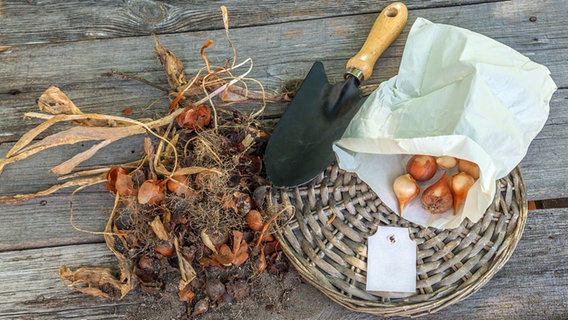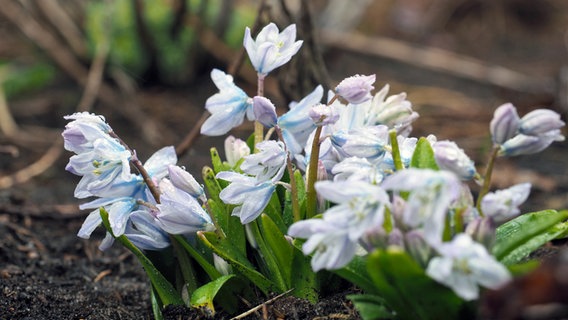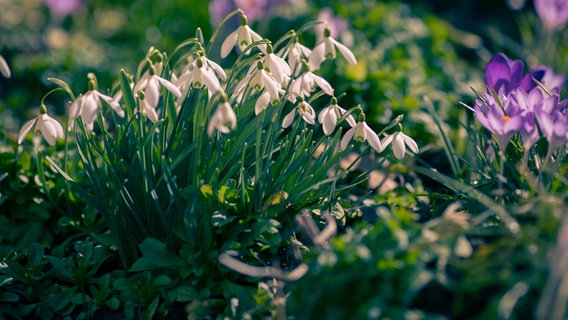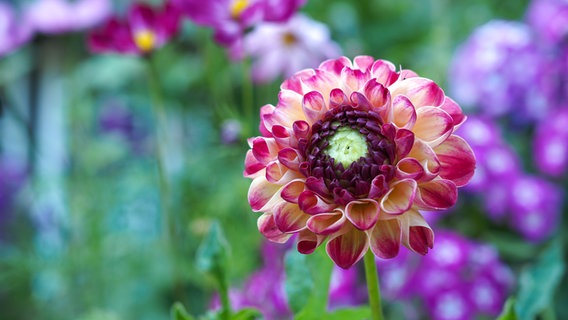Status: 05/10/2023 3:40 p.m
From March, early bloomers provide the first dash of color in the garden. But what to do when they have faded? Cut it off, dig it up or just leave it?
After flowering, bulbous flowers such as hyacinths, daffodils and tulips do not look very attractive in the garden. It would be a pity to simply cut them off because then they will no longer bloom next year.
Do not cut leaves
Colorful spring greetings: If bulb plants are treated properly, they will bloom again and again.
Rule number one for early bloomers is therefore: do not cut off the leaves, but let them dry out slowly. This is the only way for the onion to gather strength for flowering in the following year. The leaves provide vital energy for the bulb to prepare for the next growing season and to survive the dormant phase until it withers. The flowering shoots, on the other hand, should be cut off, as they unnecessarily rob the plant of energy.
Dig up the flower bulbs and store in a dry place

Important: flower bulbs must be stored in a dry place that is permeable to air, for example in a paper bag, otherwise they will rot.
If the leaves have dried up, there are two possibilities. The easiest way is to dig up the onions. They then have to be freed from leaves, cleaned and dried. This works well, for example, in a net that is hung up in a dry place. Important: Only store healthy flower bulbs. Sort out all the others and dispose of them in the trash, not on the compost as this is where plant diseases can spread throughout the garden.
After drying, the onions should be stored in a cool, dark, and dry place, such as a paper bag or basket. A box in which the onions are sorted layer by layer, each separated by a layer of newspaper, is also well suited. Tip: Label the bag or box so that you know later which flower bulbs it is. The bulbs can be planted back in the ground in autumn.
Alternative: leave onions in the ground
You can also leave the bulbs in the ground, but this has some disadvantages. Especially heavier bulbs like those of tulips dig deeper and deeper into the ground as they grow. So it can happen that after a few years they no longer manage to grow to the surface.

The squill (Scilla) bulbs can remain in the bed.
In heavy soils there is also a risk of waterlogging. Then the onions will rot. In addition, some animals, especially voles, eat the onions. However, this can be avoided if you use a plant basket. Crocuses, scilla and snowdrops can remain in the ground, where they will multiply independently over the years.
For onion bloomers from the pot, the procedure is similar to that described above: pull the onions out of the pot, free them from the soil, place them in a basket and place them on the terrace or balcony until the leaves have dried up. Then store until fall.
Propagate bulbous flowers by division
Many flower bulbs form brood bulbs. These are small clumps from which often only leaves come to the surface – but no or only a weak flower. The bulbs sit on the underside of the onions. After digging up, you can carefully separate them, also store them and plant them separately in the ground in the fall. This gives you strong bulbs in the following season, which usually bloom the following year. Another variant is propagation by seeds. However, this method is very time-consuming and not always successful.
If flower bulbs have been placed in the lawn, you should avoid them when mowing, as they also need their greenery for the coming season in order to store energy reserves.
Tip: Photograph the locations of the flowers
Tip: It is best to photograph beds and other locations of tulips, crocuses and other flowers in advance. It’s quicker than drawing all the cultures in a gardening book, for example. This way you know later exactly where which plant was and you can replant the bulbs in the same place in the fall.
Further information



